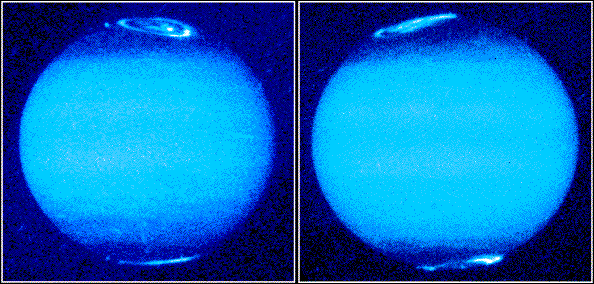
|
Explanation: Auroras are especially large on Jupiter. In pictures released yesterday, the Hubble Space Telescope imaged these unusual light displays in more detail than ever before. Jupiter's auroras are linked to its volcanic moon Io. Io's volcanoes release particles, some of which become ionized, trapped by Jupiter's magnetic field, and rain down on the gas giant. The resulting auroral displays may be thousands of times brighter than any auroral display on Earth, and involve unusual spots. The above pictures show how the extended auroral emissions rotate with Jupiter, while the auroral spots stay synchronized to Io as it circles Jupiter.
|
January February March April May June July August September October November December |
| ||||||||||||||||||||||||||||||||||||||||||||||||
NASA Web Site Statements, Warnings, and Disclaimers
NASA Official: Jay Norris. Specific rights apply.
A service of: LHEA at NASA / GSFC
& Michigan Tech. U.
Based on Astronomy Picture
Of the Day
Publications with keywords: Jupiter
Publications with words: Jupiter
See also:
- APOD: 2025 December 14 Á Juno Flyby of Ganymede and Jupiter
- APOD: 2025 May 25 Á Beneath Jupiter
- Painting with Jupiter
- APOD: 2025 April 2 Á Jupiter and Ring in Infrared from Webb
- APOD: 2025 March 9 Á Cyclones at Jupiters North Pole
- APOD: 2025 February 16 Á Perijove 11: Passing Jupiter
- Stereo Jupiter near Opposition
